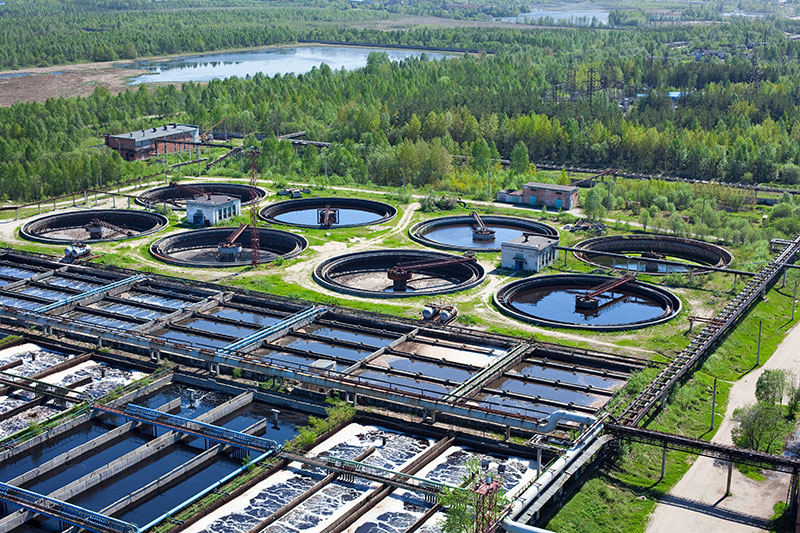The waste water are collected from the sewages and conveyed through collectors to the treatment plant.
Grilling is used to remove large solid material (pieces of plastic, wood, hygiene products, stones, paper etc.): anything that could otherwise clog pipes and pumps. It act in two steps in sequence: a first larger the second thinner. The collected grating material is washed, pressed and taken to landfill.
In the sandblasting / de-oiling process, the sands are separated by natural sedimentation, while the separation and re-ascent of the oils and fats on the surface is favored by insufflation of air which, ensuring the formation of limited turbulence, also prevents the sedimentation of organic substances.
In the primary sedimentation tank takes place the gravity separation of the sedimentable solids. The sludge accumulated on the bottom of the tank is pushed by the bottom blade of the crane into the collection hoppers and then it is taken in order to be sent for subsequent treatments. At this point end the mechanical treatments which have removed about 1/3 of the organic load.
The elimination of dissolved and suspended substances takes place in the activated sludge tank. This process is based on the metabolic action of microorganisms that use organic substances and oxygen dissolved in the slurry for their activity and reproduction. In this way flakes are formed which consist of bacteria colonies that can be easily eliminated in the subsequent sedimentation step. For optimal absorption of the substances, a sufficient presence of oxygen is required, which is supplied by blowing air from the bottom of the tank.

The separation of the mud flakes from the aerated mixture is obtained by sedimentation in the final settling tank. A crane collects the sedimented mud. The activated sludge is recirculated in the aeration tank to then be sent to the next treatment. The leaving water from the final sedimentation can be defined purified and, therefore, can be returned to the surface watercourse. In addition to mechanical and biological processes, in order to limit the nutrients, such as nitrogen and phosphorus, shall also needed other treatments, otherwise these can lead to hypertrophy in rivers and lakes. Nitrogen removal occurs with biological processes through special bacteria in the oxidation tanks, while flocculant products are added during the purification process to eliminate phosphorus. The sludge from primary and secondary sedimentation is pumped into the pre-thickener, where the concentration of solids is increased and the sludge volume is reduced. From the pre-thickener, the sludge can be sent to a digester, where it remains for about 20 days in an anoxic environment at a temperature of 35° C. Specialized anaerobic bacteria reduce the organic substance and transform it, as a result of their metabolism, into inorganic substances producing as a result of their metabolism a gas with a high methane content (biogas). The produced gas, is stored in a gasometer and used as an energy source for the production of electricity and heating. The mud, digested and almost odorless, is pumped into the post thickener to further reduce humidity.
With mechanical dehydration through a belt press or a centrifuge, the sludge volume is reduced till six times. The dehydrated sludge has a semi-solid consistency which allows it to be easily used in agriculture, composting or landfill disposal.










